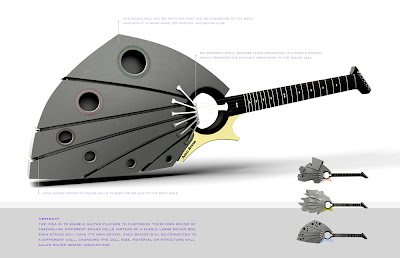If you’re new here, you may want to subscribe to my RSS feed to receive the latest Architectradure’s articles in your reader or via email. Thanks for visiting!


Mediated Social Serendipity is a report describing mobile-phone services and applications that enable users to “stumble into” friends despite being apart physically. It develops in four concept-categories for social serendipitous mobile-phone experiences.
One of the most astonishing idea presented in the report is “Nudge”, a system that recognizes patterns of everyday life and detects if a user has not send news to a friend for a long time and acts on his/her behalf accordingly. For instance, Asa’s phone registers that she is far away from home. It gathers surrounding information and will generate a text message to a good friend of hers who she has not called in several months.
The automated message would be:
Hi! Right now I’m about 3142 kilometers south-west from where you are. Felicia, Per and I are walking along the beach in Tarifa, Spain. It’s 25°C and the sun shines. We hear seagulls and waves breaking. Speak to you soon! /Asa
As she walks down to the water to dip her toes in the ocean, her phone automatically sends a message to her friend. One can immediately sees the pros and cons of such system, but what strikes me the most is the desire to have an automatic scriptwriter who kind of takes care of forgotten friends. Imagine the friend receiving an automated SMS that is kind of saying:”I am having fun at the beach, I have not contacted you for 5 years, I really don’t have time to send you any news, I don’t even think about you because my phone does the job for me, have fun in your gray Paris!”

Wouldn’t that be an awesome insulting SMS?! I seriously think this system has to be implemented and connected to Orkut, Facebook, MySpace or any social networks. This could be a new generation of text messaging system who takes care of all your social network pseudo friends. At the end of the day for a lot of people (but not me!) most of these contacts are not really your friends, you are not really honest with them, so you can take care of them in a semi-automated way. You don’t really receive news, they are not really interesting and personal, they are just Spam version 2, the kind of spam you don’t know what to do about. I am not sure what to think about it, but it is a very daring idea! This report was really exciting to read with a lot of funny, clever, and realistic visions on what mobile technology could mean within various social contexts.
Don’t forget to check another way mobile technology tries the impossible in a funny way!
More information on the report that also surveys existing systems:
Formo, J. (2007). Mediated Social Serendipity. Master thesis. The Institute of Industrial Design at Oslo School of Architecture and Design.
[PDF]
Posted by Cati Vaucelle
♥ Architectradure



















